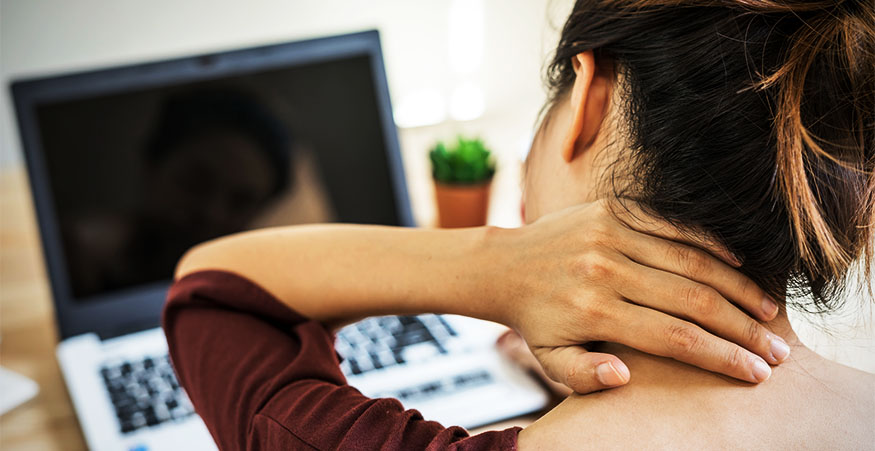A surprising health crisis has hit office workers amid the pandemic, and germs don’t cause it: It’s work-from-home (WFH) injuries. Working from the couch or kitchen counter, walking around barefoot, and snacking all day have contributed to a rise in work-related injuries and chronic pain among professionals.
Nearly a year in, and with no end in sight for many WFH employees, it’s time to get your act together. What’s the big deal?
Some orthopedic surgeons report three to four times the usual number of broken toes since the pandemic hit. As InsideHook’s Kayla Kibbe humorously puts it, “In pandemic times, many of us are spending the vast majority of our days stumbling around our homes barefoot like a bunch of shoeless degenerates, leaving our toes vulnerable to the dangers of homebound life.”
And then there are the classic ergonomic-related injuries, usually manifesting in chronic back and neck pain. Within weeks of working from home, most of us realized that where and how we set up shop directly correlates with our health and wellbeing. Those little aches and pains aren’t insignificant.
“Left unchecked, ergonomic issues can lead to permanent pain, disability and an inability to work at all,” writes The Wall Street Journal’s Rachel Feintzeig. “Still, at the beginning of the pandemic, employers were understandably more concerned with pressing crises—keeping their businesses afloat, keeping workers safe from the virus—than the threat of aches and pains…Those at home are often plunking down in broken chairs, using desks that are too shallow or even experiencing foot pain from walking around barefoot. Or worse, they’re just not getting up at all.”
If you’re feeling the pain, don’t wait to fix it. Here are some resources that can help:
- Austin-based Healthworks Ergonomics offers an Office Comfort Starter Kit with tips on how to take the pain out of work. The free kit includes a quick stretching guide and two comfort charts for setting up your workspace (one for sitting desks and another for standing desks).
- Standing, treadmill, and even cycling desks are all the rage, but are they right for you? The primary benefit of these trends is that they get people moving. If you have a hard time remembering to take a stroll around the house every 20 minutes or so, it might make a difference. But use this guide from Harvard Medical School to weigh the pros and cons.
- Headaches? Dry eyes? Your eyes could be strained by continually staring at a screen. Computer vision syndrome is an actual affliction, and it’s becoming more common during the pandemic. Consider these tips from VeryWellHealth to regain your eye health, including changing your lighting, blinking more, and using blue-light blocking glasses.
- Broken toes aren’t the only pandemic-era foot injuries that have sprung up. Suddenly walking around barefoot 24/7 is causing ligaments to stretch out and arches to fall, resulting in something podiatrists have nicknamed “Flintstone feet.” Wear supportive shoes—even when you don’t want to—advises this Houston Chronicle article.
- Finally, it’s essential not to neglect your nutrition and fitness while trapped inside your home. Experts are noticing a rise in obesity due to stay-at-home measures, which they’ve dubbed “covibesity.” Try these tips from Thrive Global, including joining an online yoga class. This YouTube playlist of quick workouts from Austin’s own Yoga with Adriene can help.
Small changes can make a big difference when it comes to chronic pain. Consult your doctor, talk to your manager or HR department about supplies and technology options, ask friends about their home office setups: Do whatever you can to ensure that WFH doesn’t continue to be a pain in the neck.
FIND YOUR NEXT OPPORTUNITY WITH THE HT GROUP
Ready to move your career forward? Connect with The HT Group today!
And be sure to connect with us on LinkedIn, Facebook and Twitter for up-to-date news and tips and let us know what’s on your mind.




